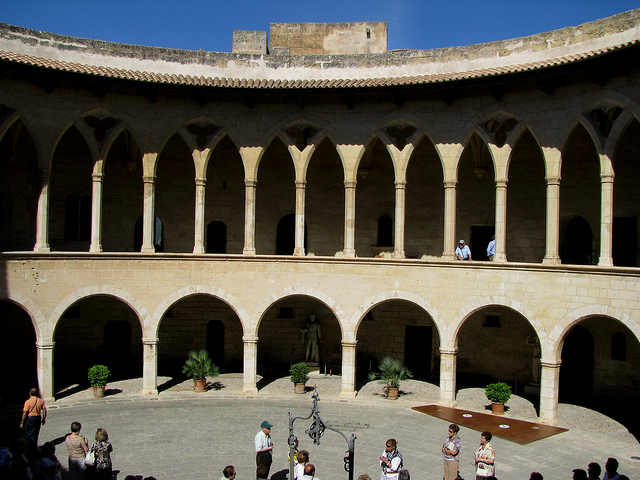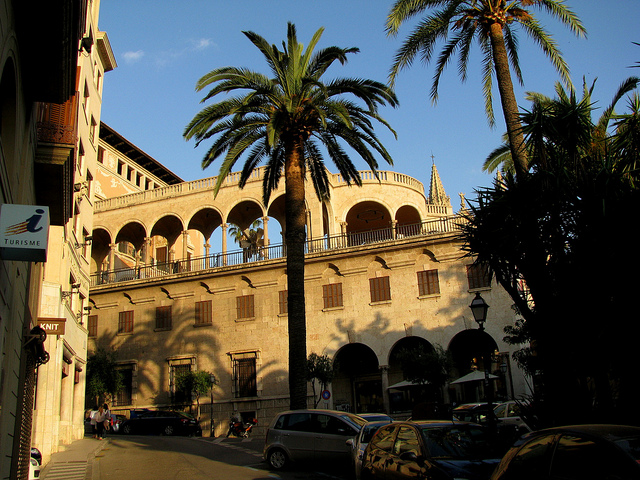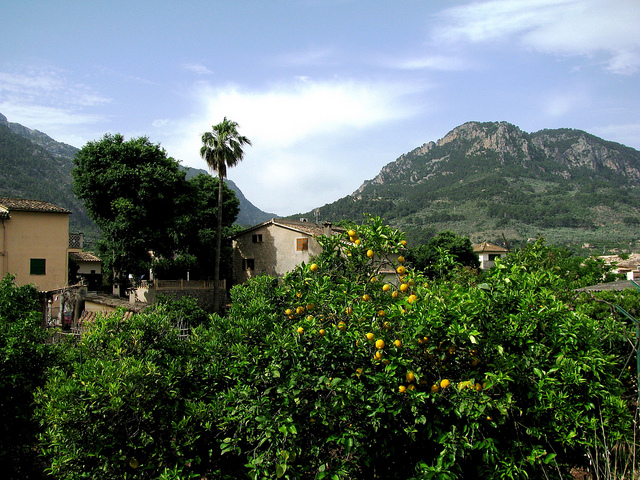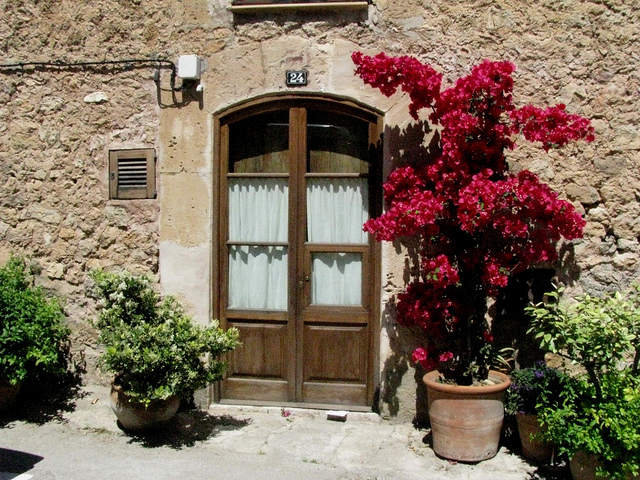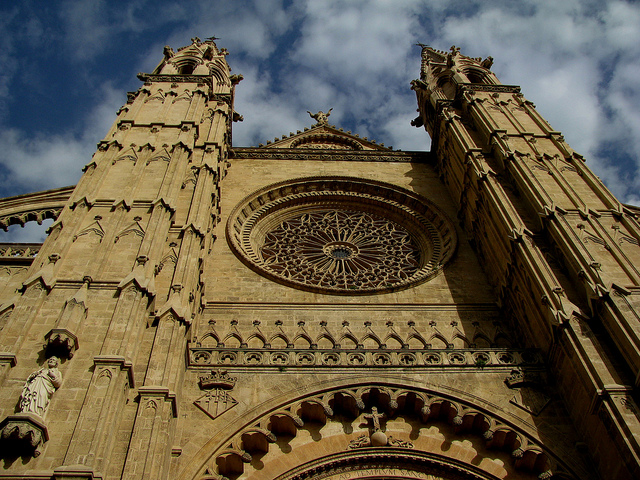After five great days in my temporary home in the Western Bay of Palma it was now time to relocate and have a closer look at the eastern side of island. I needed to check out today and move into my next apartment in Port d’Alcudia. I packed my suitcase and left the Terranova Aparthotel complex which had been a great location to explore the western and northern side of the island.
Taking the coastal highway eastwards from Palmanova through the more upscale coastal developments of Portals Nous and Illetes west of the capital, I exited just west of the harbour area of Palma de Mallorca and drove through a pleasant neighbourhood and past the verdant flanks of Bellver Hill to the parking lot of the Castle of Bellver, one of Palma’s main historic sights.

The Castell de Bellver, a unique round castle from the 1300s
Several large tour buses had already unloaded dozens of school children on this gorgeous Thursday morning. I strolled up to the entrance of the castle and paid the 4 Euro admission fee to gain access to this famous round medieval castle. Built in the early 1300s for King James II of Aragon, it is now one of Palma’s most popular tourist attractions.

The arcaded walkways of this unique round castle
Once I entered into the courtyard of the castle, the circular design became really apparent. Two tiers of arcades held up with Gothic pillars on the second floor and round arches on the main floor surround the castle’s inner courtyard which is anchored by three massive circular towers. The centre of the castle is highlighted by a well which still holds water at the bottom.

One of the exhibition rooms inside the Castell de Bellver
Most of the doors in the castle were closed, but one door on the main floor was open and led me into the Museum of the City of Palma which chronicles the history of the city dating back to pre-historic times (the Pre-Talayotic Culture), featuring earthenware that was produced in 1600 before Christ. The Romans conquered the island in 123 BC and ushered in the Romanization of the Balearic Island. The Moors ruled the island between 902 and 1229 AD and were responsible for great advances in agriculture, including terraced irrigation systems, many of which are still visible today. Palma’s medieval history and more recent developments are also illustrated in this museum.

Another view of the City Museum in the Castell de Bellver
I then made my up to the second floor and from there onto the top floor of the castle which provides a phenomenal 360 degree view of the surrounding landscapes. With its location on a hilltop, the Castell de Bellver has one of the most prominent locations in the entire city of Palma and offers a fabulous view towards the downtown, the harbour and the famous La Seu Cathedral.

A Gothic room inside the Castell de Bellver
One floor down there is another museum that features a very large collection of Roman-era statues, jewellery and gravestones. Next to these exhibits is a large medieval-looking room with oversized pots and cauldrons. The ceiling of this room is blackened, and although there were no explanations, I assumed that this might have been a kitchen with an open hearth in earlier times. Bellver Castle is a must-see destination in Palma, and offers a great opportunity to visit an extremely well-preserved circular Gothic castle that is almost 800 years old.

Castell de Bellver- the first round castle I have ever seen
I got back into my car and started heading east on the C713 highway to the town of Inca, which is located in the interior of the island just a bit south of the majestic Tramuntana Mountains. Inca, the third-largest town on the island of Mallorca, is an industrial town and the centre of the island’s leather manufacturing industry.

It’s market day in Inca
Every Thursday there is a street market in the city, and I was lucky to arrive on market day as the city was bustling with activity. The market stretches for kilometers from one square to another. A wide range of merchandise includes fruits and vegetables as well as a large variety of clothing and houseware items. I just could not resist and had to buy a quart of freshly picked Spanish cherries. A Latin American Indian band was playing on the main square, and thousands of locals were strolling slowly to do their shopping. In Europe, people still do a lot of their shopping in weekly outdoor markets.

Locals and tourists alike shop at the market in Inca
Jewellery was also on sale, and I ended up purchasing a few necklaces made of Mallorcan pearls, manufactured by the Perlas Majorica factory in Manacor. Mallorcan pearls are actually glass beads that are covered with multiple layers of a fish scale and resin mixture resin. The final product is hard to distinguish from real pearls. The necklaces I bought would make a great souvenir for my friends back in Canada.

Outdoor patios on one of Inca’s main squares
I headed back on the highway to continue driving northeast towards Alcudia, a historic town at the southern end of the Bay of Pollença. I stopped at a local gas station and the friendly residents explained to me how to get to Port d’Alcudia where I would be spending the next 3 days, residing at the Eden Aparthotel Alcudia.

Colourful baskets in the market of Inca
